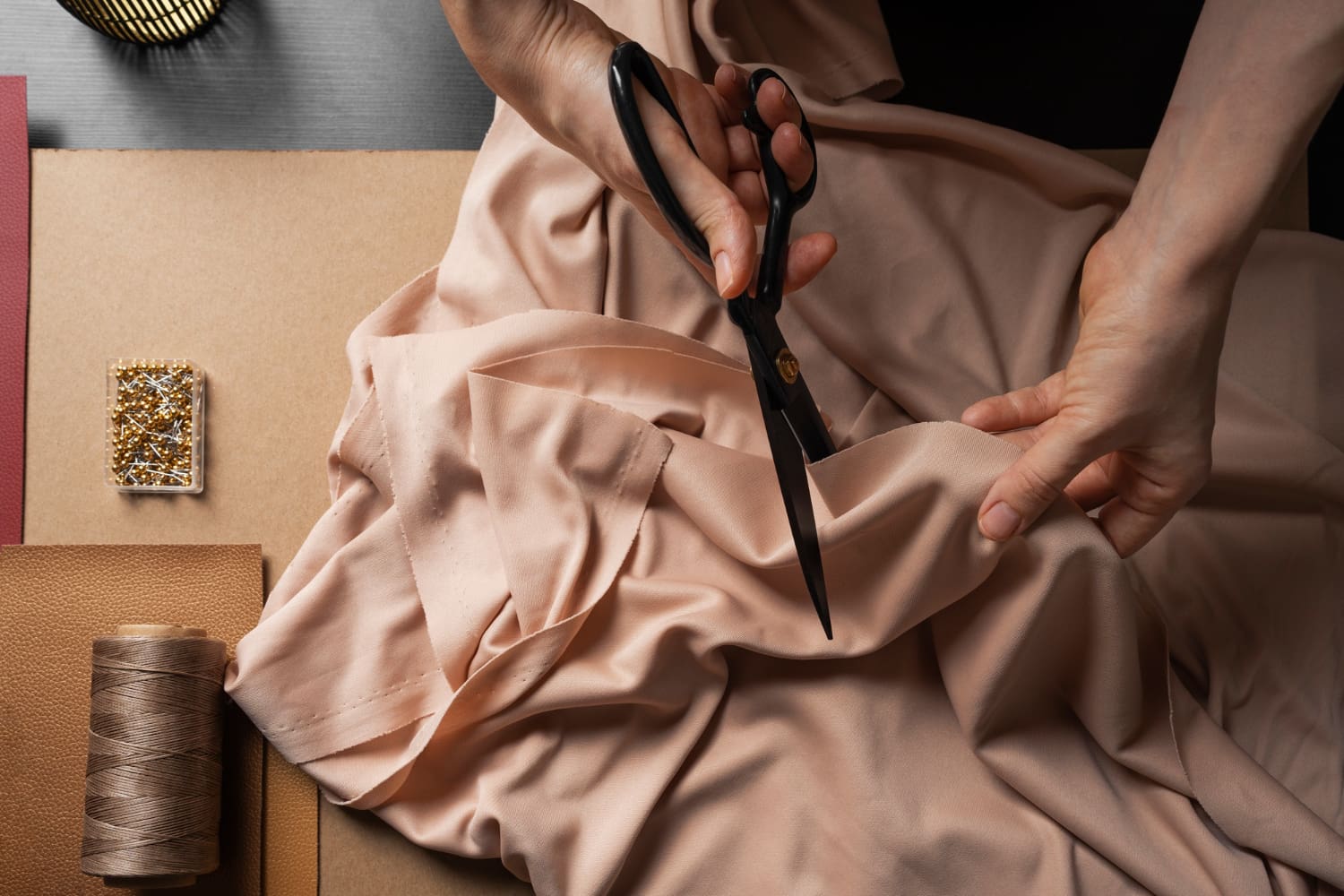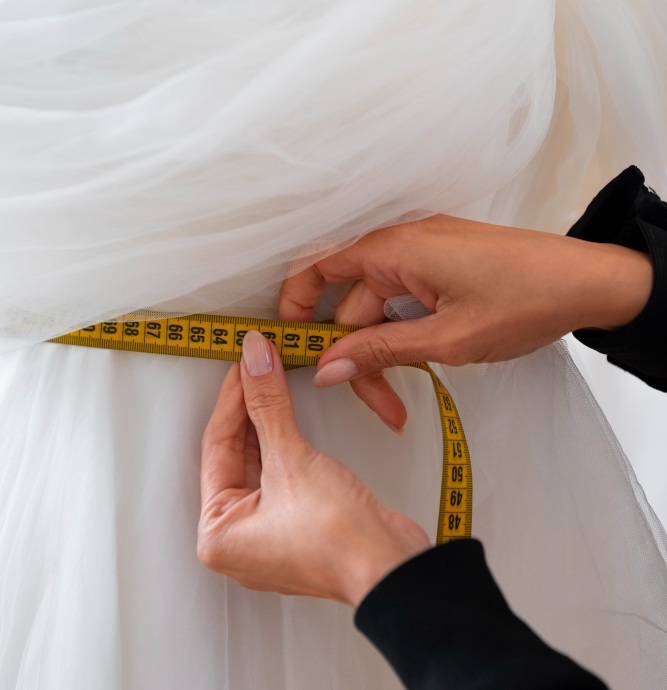
Fittings are your opportunity to have a real say in how your clothing fits and feels. Maybe you prefer a sleeker cut through the waist, a softer drape at the shoulders, or a hemline that flatters your favorite shoes. Each visit is a chance to refine those details with the help of a professional eye.
As for how many fittings you’ll need? That depends on the scale of the work. Some alterations are simple enough for one visit, while others require layers of adjustments that only reveal themselves after the first round.
Your tailor can always guide you, but it helps to have a roadmap before you walk in. That’s why we outlined the most common scenarios and what they typically require.
Not every adjustment requires multiple trips back and forth to your tailor. In fact, many small clothing alterations can be finished in just one fitting, especially when the change is straightforward.
These are typically tasks that don’t affect the overall shape or structure of the garment but instead focus on quick, targeted fixes. If you’re new to the alteration process, these one-visit adjustments are often the easiest to understand and plan for.
For simple needs, most customers can drop off their clothes and pick them up after just one visit. These projects are:
These changes don’t alter the garment’s silhouette or require multiple checks. Since the alteration fittings timeline is short, tailors can confidently complete them without needing you back for a second round.
Even when only one visit is needed, it helps to bring the right shoes, belts, or undergarments. That way, the hemline or waistline is measured precisely, saving both you and the tailor from adjustments later.
On the other hand, more complex garments, like dresses, gowns, or bespoke suits, nearly always require more than one fitting. These pieces involve structured tailoring, multiple fabric layers, and detailed design features that can’t be perfected in a single visit.
Expect two to four appointments, depending on the garment and its complexity. Understanding this helps you stay realistic about the alteration process.
Bridal alterations usually require at least three fittings. Key reasons include:
Suits involve structure in both the jacket and trousers. Tailors may need more than one fitting to check:
For cocktail dresses, bridesmaid gowns, or formalwear, expect at least two fittings. Tailors often refine details such as:
It can feel inconvenient to return for multiple fittings, but extra visits usually mean a better result. Each appointment lets your tailor test the garment’s comfort, adjust the fit, and make sure the design details are secure. The alteration process works like building in layers; every fitting gets closer to the final version that feels made just for you.
Even if a garment looks good on the hanger, the way it moves on your body matters. Extra fittings allow adjustments for:
Small details often require a second or third check. This includes:
Multiple fittings also give customers confidence. Instead of wondering how the garment will feel on the day of the ceremony or event, you know exactly what to expect because the fit has been checked thoroughly.

The alteration fittings timeline works best when planned early. Rushed fittings often lead to stress, higher fees, or last-minute adjustments. Whether it’s a wedding dress, suit, or even a simple blouse, schedule your fittings with enough time for extra visits if needed.
Planning ahead avoids unnecessary pressure. Here’s a simple guide:
Keeping your schedule organized helps the alteration process run smoothly. Consider:
Body changes, such as weight loss, can affect your fit. Leaving a little flexibility in your schedule ensures you don’t feel rushed if extra fittings become necessary.
In any alteration project, fitting is crucial to achieve the look you’ll be proud to wear. If you need a professional hand, our specialists at Best Cleaners take the time to perfect every detail with expert care.
We offer premium Alterations and Tailoring Servicesto Albany, Schenectady, Troy, Saratoga, and the surrounding areas. Our tailors can help you repurpose old favorites, perfect brand new garments, and keep your style exactly as you envision. For over 20 years, the Capital Region has trusted our local, family-owned team for high-quality clothing alterations and personalized service.
Don’t settle for standard sizes when you can enjoy custom-fit comfort and style. Call us today at 518-490-4696 or stop by one of our tailoring locations in Delmar, Glenville, Latham, or Schenectady to book your fitting.

